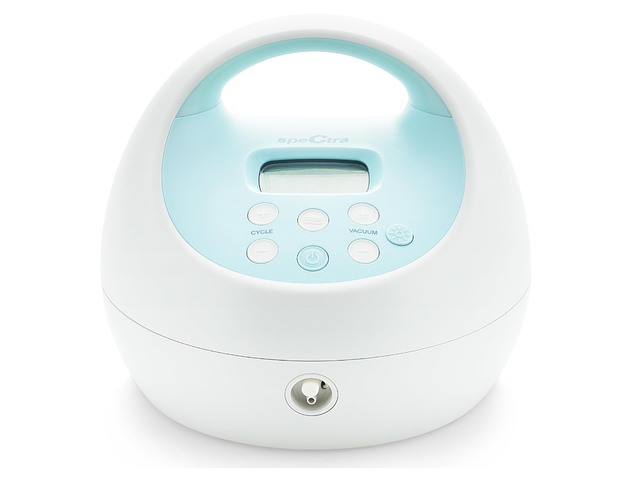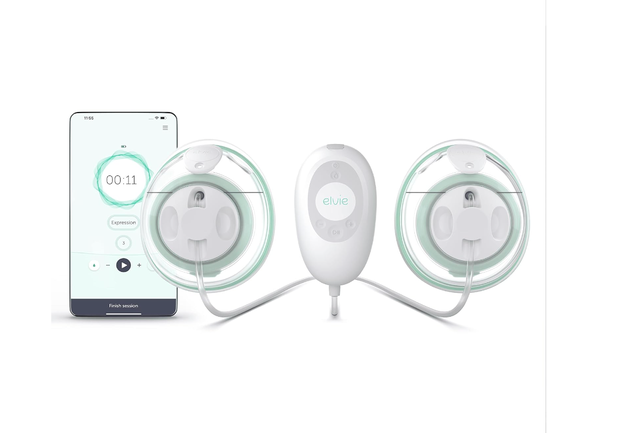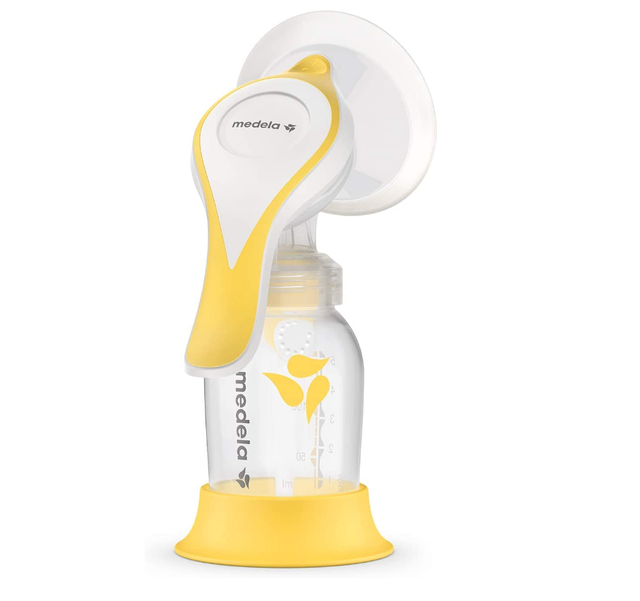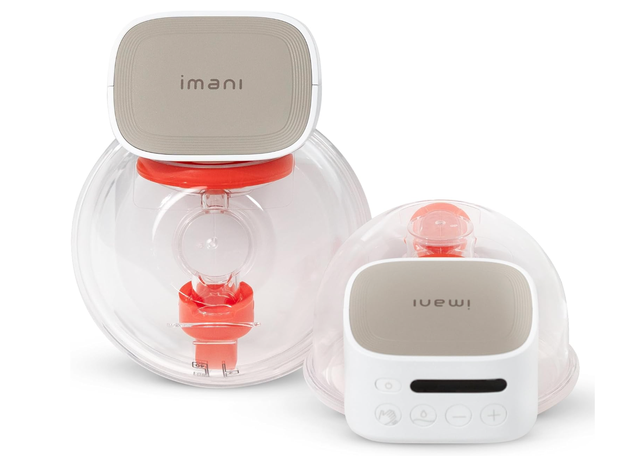Best breast pumps for new moms
The decision to breastfeed is one of the biggest decisions any new mom will make. Breastfeeding requires a time commitment and physical demand that can make the notion of breastfeeding overwhelming (and impractical) for some, while some new moms relish the opportunity to nest and feed their new bundle of joy. The right breast pump can take some of the stress out of breastfeeding, and can even help dads, partners and caretakers get in on the joy of feeding the baby.
We're big fans of no-judgment parenting and of finding products for new moms and dads that make life easier (for you and the baby). So whether you're in search of a breast pump that can supplement feeds in your absence, or you're looking to pump exclusively, there's a breast pump for you.
Best breast pumps for new moms
The right pump should help moms and dads feed their babies with confidence. We chose breast pumps that were four-star rated or above, easy to use and to clean, while constructed to make mom's day easier.
- Best classic breast pump: Spectra S1
- Best wearable breast pump: Willow Go double electric breast pump
- Best hospital-grade breast pump: Elvie Stride
- Best manual breast pump: Medela manual breast pump
- Best affordable breast pump: Legendairy Milk Imani i2 Plus wearable breast pump
Best classic breast pump: Spectra S1
When it comes to a classic breast pump, Spectra delivers a terrific option in the S1. The pump can be used as a single or double pump, and the base features a compartment for a Spectra bottle and on-the-go feeding supplies.
The pump offers comfortable suction designed to mimic a baby's natural sucking as closely as possible. We like the pump's backflow protector, which creates a physical barrier between your milk and the pump motor. That makes the pump easier to clean and to maintain.
This 4.6-star rated breast pump is available at Amazon and Target for $198.
Top features of the Spectra S1:
- The base offers storage for a bottle and supplies.
- The pump is rechargeable.
- The suction can be adjusted.
Best wearable breast pump: Willow Go double electric breast pump
There's a lot to love about the Willow Go wearable breast pump, with reusable cups that slip into most tops or bras and allow Mom to have a fully hands-free experience.
It's a spill-proof pump that allows Mom to do just about anything (maybe don't try yoga) while pumping without spilling or dropping the cups. Willow promises a quiet pump and it is just that.
The cups hold five ounces per side. The pump is controlled through an app on which users can track each session. If you have sensitive breasts, wearable pumps can deliver a slight pinching sensation.
The Willow Go breast pump is available at Amazon and Walmart for $350.
Top features of the Willow Go double electric breast pump:
- It's completely hands-free and quiet.
- It's easy to use but does require a slight learning curve in the beginning.
- Control the pump through the app, or connect through your Apple Watch.
Best hospital-grade breast pump: Elvie Stride
The Elvie Stride features two slim and comfortable cups, which slip into a shirt or bra, and connect to the motor (which is separate) through tubing. That means the motor can deliver hospital-grade suction up to 300 mmHg. The cups collect the expressed milk and don't require a separate bottle like many other breast pumps.
The pump connects to an app, which allows you to control the pump remotely and adjust the intensity of suction. The app also tracks your pumping history.
Because the motor is connected separately and the device has tubes, it's slightly less discreet than some other breast pumps, but it's quiet enough so you'll able to pump it up on your next Zoom call if needed.
The Elvie Stride is $189 at Amazon, reduced from a list price of $270.
Top features of the Elvie Stride:
- Whisper quiet
- Each cup holds up to five ounces of milk
- If offers hospital-grade strength.
Best manual breast pump: Medela manual breast pump
It's impossible to talk breast pumps without bringing Medela into the mix. One of the O.G. breast pumps, Medela is still a leader in the space. A manual pump is essential, even if one chooses to have an electric pump on hand at home.
Medela's manual pump is compact, lightweight and easy to take with you on the go. It features an oval-shaped shield with a padded rim and a 105-degree angle to better fit differing bodies easily. And while most electric pumps deliver a slight hum that can likely be heard on work calls or Zoom meetings, Medela's manual pump is quiet enough that you could pump during work and no one would be the wiser (don't forget to turn your camera off!).
While there are other terrific manual pumps on the market, Medela's features "two-phase" technology, closely mimicking how a baby feeds, helping your body stay on its natural feeding schedule without risking overproduction and engorgement.
When you're caught in traffic at feeding time or need to express some milk when baby starts sleeping through the night, you'll be thrilled to have this simple, but efficient manual pump on hand.
The Medela manual pump is available for $25 at Amazon and Target.
Top features of the Medela manual pump:
- Its "two-phase" technology mimics a baby's natural sucking, which automatically switches from stimulation mode to letdown mode after two minutes.
- It's more comfortable than many manual breast pumps.
Best affordable breast pump: Legendairy Milk Imani i2 Plus wearable breast pump
If you're content with a no-frills, but comfortable wearable breast pump, the Imani i2 Plus is a budget-friendly pump that gets the job done. The motor sits on top of the cup, which likely sticks out of the top of a bra or shirt, so this may not be the most discreet pump you can find. For the price, however, it's a reliable machine.
The kit features two motors, which can be charged at the same time on a separate dock, and delivers five to six sessions from one charge. Each cup holds seven ounces of milk and the pump features an auto shut-off feature, which shuts down after 20 minutes.
This pump's parts aren't dishwasher safe, but still it's a terrific option for the price.
The Imani i2 Plus is available at Amazon for $150. You can get purchase it with the charging dock for $170.
Top features of the Imani i2 Plus breast pump:
- This pump is spill-proof and lightweight.
- The double pump makes pumping sessions shorter and more efficient.
Why every breastfeeding mom should consider a breast pump
If you plan to exclusively breastfeed, you'll still want to consider having a breast pump on hand. Babies, especially newborns, feed every few hours (some even more often). Even if you have plans to spend every moment of your baby's infancy with the little one, that's probably not realistic. Whether you're a working mom going back to the office after maternity leave, or you're staying home with the little one but need to run errands, see friends or go to doctor appointments, owning a breast pump will allow you to store a supply of milk to be used in the event you need to (or want to) be away from your baby for more than a few hours.
Getting on a regular pumping schedule, or pumping before you're going to be away and miss the baby's scheduled feeding, allows you to step away from the baby without risking engorgement (which can lead to mastitis) while affording you the confidence to know your baby will be fed on time even in your absence.
Important terms to know when shopping for a breast pump
Since the day you announced you were expecting, you've likely been inundated with questions from well-meaning relatives and strangers chiming in on whether or not you should breastfeed. Your baby is going to be terrific whether you choose to breastfeed, use formula, or use a combination of both. The decision to breastfeed is entirely personal. There is no right or wrong way to feed your baby.
But deciding whether or not to breastfeed can be slightly (understatement alert) overwhelming, especially when people are throwing around terms that you're not totally sure what they mean. Been there, and we're here to help.
- Hospital-grade pumps typically have powerful motors, which will likely yield more milk. Hospital-grade pumps are generally more expensive than other breast pumps. Mothers of multiples or pre-mature babies may opt for a hospital-grade pump due to its increased suction.
- Manual pumps require you to do the pumping. They're generally small and lightweight. Some even fit in the side pocket of your yoga pants. While not particularly discreet, nor handsfree, we think a manual pump is a breastfeeding essential for travel, work or extended stays away from the baby that might have you full and needing to express a small amount of milk for your comfort.
- Electric pumps are sometimes portable but generally consist of a base that houses the motor and one or two tubes that connect the cups to the motor. Hospital-grade pumps are electric, but not all electric pumps are hospital-grade.
- Wearable pumps feature cups that slip into mom's bra or shirt and are generally battery operated so mom can move about work or the house without being sequestered to a chair and an electrical outlet while pumping. Many wearable pumps feature a whisper-quiet motor, ideal for working moms who need to pump during the day, and who may not want to call the whole office's attention to herself while pumping.
It's a challenge to be a breastfeeding new mom and not hear the terms engorged and mastitis. Breasts become engorged when overfull with milk, which can be quite painful, cause embarrassing leaks or set mom up for a nasty case of mastitis, which is an inflammation of the breast tissue. Mastitis can cause a painful infection, which could require antibiotics.
Breasts become engorged either from overproduction (pumping too often can increase milk supply and cause overproduction), missing baby's feeding or feeding off schedule.
How to clean your breast pump
Now that you've chosen the perfect pump for your family, you'll want to make sure it's cleaned correctly. Bacteria can build in the pump's tubes, which can make your baby sick. When using any new baby product, especially a breast pump, it's important to read the manual before using it to understand which parts should be washed, and the best way to clean them.
The CDC (Center for Disease Control) suggests the following methods for cleaning a breast pump:
- Rinse each piece that comes into contact with breast milk in cool water as soon as possible after pumping.
- Wash each piece separately using liquid dishwashing soap and plenty of warm water.
- Rinse each piece thoroughly with hot water for 10-15 seconds.
- Place the pieces neatly on a clean paper towel or in a clean drying rack and allow them to air dry.
- Avoid using cloth towels to dry your pump parts because they can carry germs and bacteria that are harmful to your breast milk and your baby.
- Once the pump parts are dry, assemble the pump before you store it or use it.
- Try not to touch the inside of any parts that will come in contact with your breast milk.





